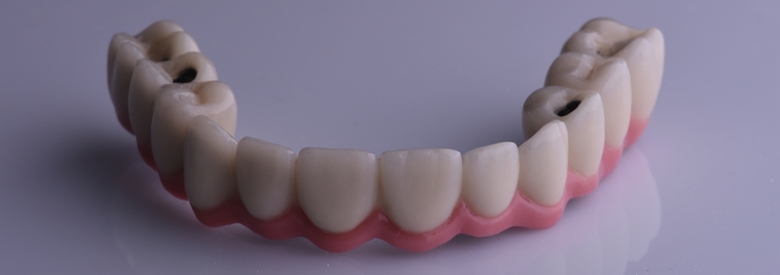
A dental ceramic bridge consists of dental crowns joined together into a chain and placed in gaps between healthy teeth in a jawbone. In order to place it, adjacent natural teeth need to be recontoured, as they will serve as the support. It is necessary that the supporting teeth are completely immobile in the jawbone, with no gum disease present, so they can bear the load of a bridge.
Even when a patient insists on placing dental implants, there are those situations where a ceramic or a metal-ceramic bridge will do the job better. These cases involve not having enough bone tissue to use implants, when vital nerves and sinuses are located precariously close to the site of implant placement or when the general health of a patient is poor due to numerous bad habits.
Teeth with shallow roots and far apart (for example canines and second molars) have a less favourable prognosis than a bridge from, say, premolars to molars. Bridges are planned to be positioned in such way that they apply gentle pressure to gums where the teeth are missing in order to simulate the feeling of having the teeth. Furthermore, thanks to the gentle contact with gums, there is less likelihood of gum recession under the bridge.
As for the choice of material, the metal-ceramic crowns have the upper hand compared to ceramic. In a case where a significant number of teeth is missing, but the patient still wishes for a bridge rather than implants, the considerable distances are easier to bridge using metal-ceramic bridges, because metal is more pliant than zirconium. Nevertheless, if a patient wants to go for a longer string full-ceramic bridge, we have to form a zirconium base for that bridge, similar to the zirconium base for ceramic crowns, and then to top it with ceramic, since this is the only way to make sure that dental crowns will last long.
In situations where both bridges and implants present a viable solution, at Cvejanović Clinic we mostly prefer implants, which, though being somewhat more pricy and complex, provide better stability, they strengthen jawbones, decrease the chance of further gum recession and help maintain a better hygiene. Dental bridge owners will have to remove any food wedged under the bridge carefully and assiduously, because if they do not, this may cause inflammation, receding gums and other complications.
